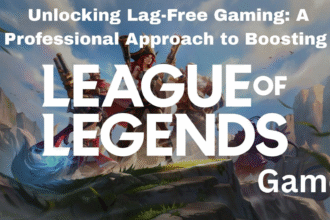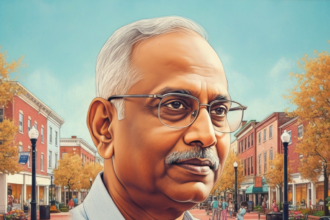Introduction to the New York Times
The New York Times has long been a cornerstone of journalism, revered for its commitment to truth and depth in storytelling. But what truly sets it apart is its audacious spirit—a daring push towards what many have come to recognize as “gutsy boldness.” This phrase encapsulates the fearless approach the publication takes in addressing complex issues, challenging authority, and illuminating underreported stories. As audiences crave authenticity and transparency more than ever, “gutsy boldness” serves as both a guiding principle and a rallying cry for journalists aiming to make waves rather than just ripples. Join us as we delve into the evolution of this mantra within The New York Times and uncover how it shapes modern journalism today.
Evolution of the Gutsy Boldness NYT
The New York Times has long been a beacon of journalistic integrity. Over the decades, it evolved from traditional reporting to embrace a more audacious approach. This shift marked the birth of what many now refer to as “gutsy boldness.”
As society’s complexities grew, so did the newspaper’s willingness to tackle challenging topics head-on. Investigative journalism became a staple. The Times began unveiling stories that others shied away from, delving into corruption and injustice.
With digital media on the rise, this boldness transformed again. The NYT leveraged online platforms for real-time reporting and interactive storytelling. Readers witnessed an evolution in how news was presented—more visually compelling and immediate.
This journey reflects not just changes in technology but also shifts in public expectation for transparency and accountability in journalism. Gutsy boldness is now ingrained in its identity, shaping its editorial choices daily.
Impact of Gutsy Boldness NYT on Journalism
The Gutsy Boldness NYT has significantly reshaped the landscape of journalism. This approach encourages reporters to tackle tough subjects head-on, often challenging established norms and conventions.
With fearless reporting at its core, it inspires journalists to dig deeper into complex issues. Investigative pieces that unveil hidden truths have become a hallmark of this style.
This boldness also resonates with audiences craving authenticity. Readers appreciate content that speaks truthfully about societal challenges and injustices—even when it’s uncomfortable.
Furthermore, Gutsy Boldness NYT sets a standard for other media outlets. It compels them to elevate their own practices in pursuit of transparency and accountability.
In an era where misinformation is rampant, such courage in storytelling serves as a beacon for journalistic integrity. The influence extends beyond mere headlines; it cultivates trust in the profession itself.
Controversial Moments in Gutsy Boldness NYT’s History
Gutsy boldness at the New York Times has often sparked heated debates. One notable moment occurred with their coverage of the Iraq War. Critics argued that some articles lacked sufficient scrutiny, while others praised them for shedding light on critical issues.
Another pivotal instance was the publication of a 1619 Project piece. This series aimed to reframe American history through the lens of slavery. While many hailed it as groundbreaking, it also faced backlash from historians who contended that certain claims were misleading.
The decision to hire controversial figures as columnists further fueled discussions around journalistic integrity versus diverse perspectives. Some readers applauded this move, believing it showcased a commitment to free speech, while others viewed it as compromising credibility.
These moments underscore how Gutsy Boldness NYT isn’t just about audacity; it’s also deeply intertwined with public discourse and accountability in journalism.
Criticism and Praise for the Gutsy Boldness NYT
Criticism and praise for the Gutsy Boldness NYT often coexist in a complex dance. Some applaud its relentless pursuit of truth, believing it raises the bar for modern journalism. This bold approach challenges norms and encourages readers to question narratives.
Conversely, skeptics argue that this style can lead to sensationalism. They claim that sometimes the line between reporting facts and creating headlines blurs dangerously. Critics express concern over potential biases in coverage, suggesting that not every bold story is necessarily well-founded.
Yet others emphasize the importance of fearlessness in today’s media landscape. The demand for authentic voices makes Gutsy Boldness NYT a beacon for those weary of traditional reporting methods.
The duality of responses reflects society’s broader struggle with trust in media outlets. In an era marked by polarization, such discussions remain crucial as they shape public perception and influence journalistic integrity.
Lessons Learned from Gutsy Boldness NYT’s Approach to Journalism
Lessons from the Gutsy Boldness NYT resonate deeply within journalism. One key takeaway is the importance of taking risks. The willingness to challenge norms can lead to groundbreaking stories.
Transparency also plays a critical role. By being open about their processes, journalists build trust with readers. This fosters a more engaged audience who values authentic reporting.
Adaptability is another lesson worth noting. As media landscapes shift, staying relevant requires innovation and flexibility in storytelling formats.
Moreover, collaboration enhances quality. Working with diverse voices enriches narratives and broadens perspectives, making journalism more inclusive.
Embracing criticism teaches resilience. Facing backlash can be daunting but offers valuable insights for growth and improvement in journalistic practices. These lessons illuminate paths toward fostering integrity and creativity in modern journalism.
Conclusion
The concept of gutsy boldness at the New York Times represents a daring approach to journalism. It challenges norms and pushes boundaries, serving as a beacon for aspiring journalists.
This boldness invites readers to engage deeply with complex issues. It encourages critical thinking and fosters informed discussions that resonate beyond the page.
As media landscapes evolve, this fearless stance remains vital. The ability to navigate controversy while maintaining integrity is essential in today’s climate.
Gutsy boldness reminds us that journalism is not just about reporting facts but also about shaping narratives that matter. Embracing this philosophy can inspire both seasoned reporters and new voices alike.
FAQs
Q:1 What does “gutsy boldness” mean in the context of The New York Times?
A: Gutsy boldness refers to the fearless and audacious approach The New York Times takes in its journalism. It embodies a commitment to truth, transparency, and tackling controversial issues head-on.
Q:2 How has Gutsy Boldness NYT evolved over time?
A: Over the years, Gutsy Boldness NYT has adapted to changing societal norms and technological advancements. From traditional print journalism to digital storytelling, it continuously seeks innovative ways to engage readers while maintaining its core values.
Q:3 Has Gutsy Boldness NYT faced backlash for its reporting?
A: Yes, there have been several instances where articles published under this banner sparked significant controversy. While some applaud their courage, others criticize them for perceived biases or sensationalism.
Q:4 What are some notable examples of Gutsy Boldness NYT in recent history?
A: Recent investigative pieces on political scandals and social justice movements highlight this approach. These stories often challenge powerful figures and institutions while shedding light on underreported topics.
Q:5 How can I stay updated with Gutsy Boldness NYT’s latest content?
A: The easiest way is by subscribing to The New York Times’ newsletter or following them on social media platforms. This ensures you receive timely updates about new articles that showcase their gutsy bold approach.
Q:6 Why is it important for journalists to embrace gutsiness in their work?
A: Embracing gutsiness allows journalists to uncover truths that may otherwise remain hidden. It fosters accountability among those in power while empowering marginalized voices within society.
Q:7 Is there a way for independent journalists to adopt a similar stance as Gutsy Boldness NYT?
A: Absolutely! Independent journalists can take inspiration from the principles of thorough research, ethical standards, community engagement, and fearlessness when covering sensitive subjects or challenging narratives.

















